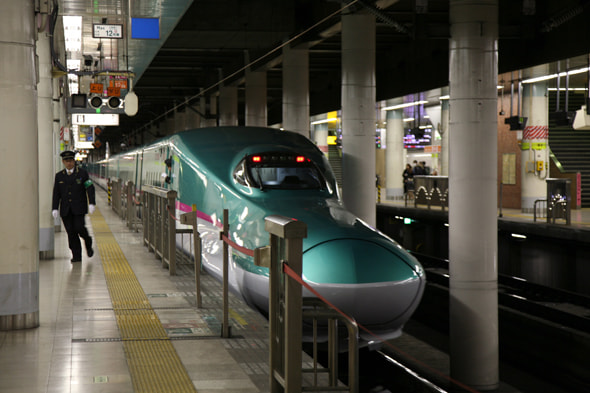
The Tohoku Shinkansen E5 Series "Hayabusa" running on the basement level 4
The present-day Ueno Station building began to be built in 1930 during the post-quake reconstruction of the railroad between Ueno and Uguisudani, and the station was completed and opened in 1932. The reinforced concrete two-storied station building, which had two-tiered platforms, a boarding platform and an arrival platform, was designed by the Ministry of Railway (Saichi Sakami) at that time. It is said that this area's ground was soft and contained a lot of water so they struggled to carry out waterproofing and reinforcement work. Even now, ground improvement work and maintenance of buildings are still conducted. The underground station was built in 1985, and the start of the Shinkansen's operation significantly changed the function of Ueno Station. The station's office, which was formerly placed on the second floor, was moved to the first floor, and commercial facilities were newly built on the place where the office was previously located. Ueno Station was one of the first stations in Tokyo, which was transformed into a station complex that is so-called "Eki-naka."(continued in the lower column)
For details about how the Ueno Station building was constructed, see "History of Ueno Station (Japanese language site)" created by Kajima Corporation that built the present-day Ueno Station building.
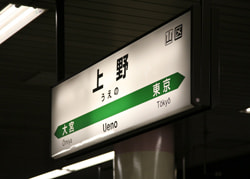
Tohoku and Joetsu Shinkansen trains reach Shin-Aomori Station and Niigata Station respectively via Omiya Station, Akita Shinkansen trains reach Akita Station via Sendai Station and Morioka Station, and Nagano Shinkansen trains reach Nagano Station.
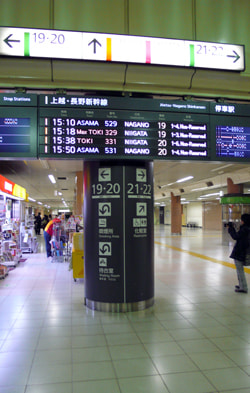
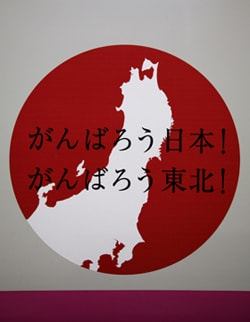
A sticker "Ganbaro Nippon! Ganbaro Tohoku!" put on the Akita Shinkansen "Komachi"
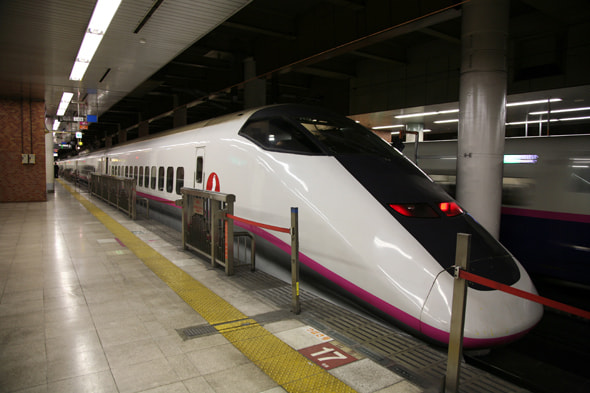
The Akita Shinkansen E3 Series "Komachi"
Ueno Station is crowded with passengers who commute from suburbs via Joban Line, Keihin-Tohoku Line, Yamanote Line and other lines, as well as travelers who leave for Tohoku Region, Joetsu Region and Nagano Prefecture. The station has four gates: Central Gate, Shinobazu Gate on the mezzanine level, from which you can go to the direction of Shinobazuno Pond, Park Gate on the third floor, from which you can go to the direction of Ueno Park, and Iriya Gate, from which you can go to the direction of Iriya. Keisei-Ueno Station is also located next to Ueno Station, and there are gates of Tokyo Metro in the basement of Ueno Station, so daily commuters walk through slightly intricate passages, heading for gates. In the evening, they pass through the gates again and take trains home. The Park Exit is always crowded with visitors to the Ueno Zoological Gardens and students on a school trip. The Cassiopeia, a luxury overnight limited express train that is popular for a comfortable journey to Sapporo, also departs from Ueno Station.
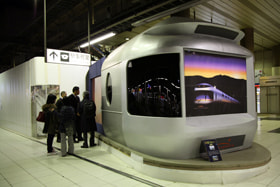
"Cassiopeia Suite (observation room)," a room installed in the last car of the train, is reproduced.
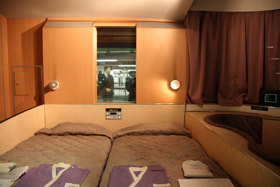
Inside of Cassiopeia Suite (observation room)
In addition to twin beds, a sofa is placed beside a large observation window at the rear end. You can order an elegant Japanese meal, and use a shower room. There is only one Cassiopeia Suite room in the train, so it is difficult to reserve the room.
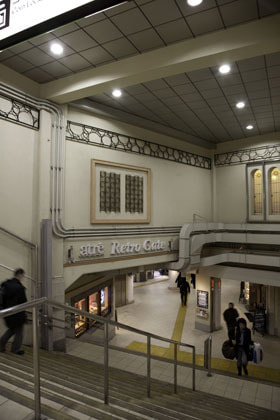
A stairway leading to Tokyo Metro, Ginza Line
It is an underground passage that retains a nostalgic atmosphere of the Showa Period.
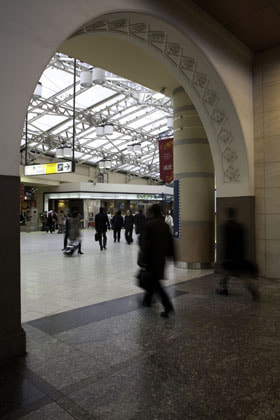

Tohoku and Joetsu Shinkansen trains reach Shin-Aomori Station and Niigata Station respectively via Omiya Station, Akita Shinkansen trains reach Akita Station via Sendai Station and Morioka Station, and Nagano Shinkansen trains reach Nagano Station.


A sticker "Ganbaro Nippon! Ganbaro Tohoku!" put on the Akita Shinkansen "Komachi"












